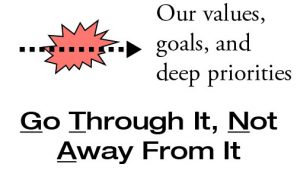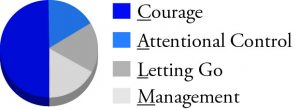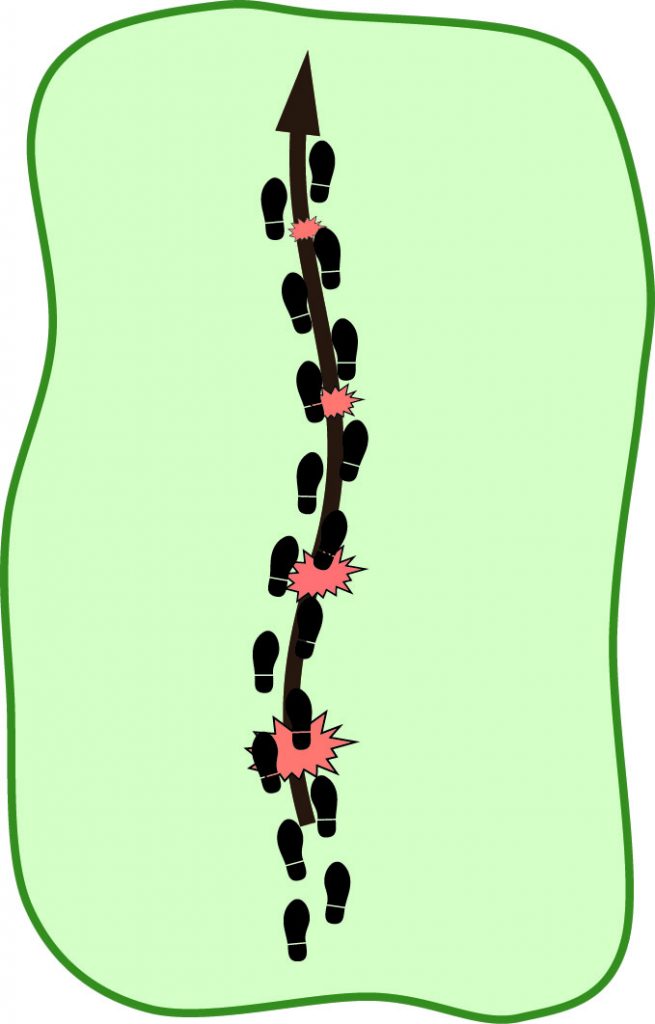Resolving the Anxiety Dilemma: Conclusion
We are walking along our path in life. The ground ahead is firm and dry. The sky above is cloudless. Things are going smoothly as we put one foot in front of the other.
But we see it when we round the corner: a swamp of anxiety in the middle of our pathway.
Our strong inclination is to avoid the swamp. But there is no veering away from it without veering off our course; no avoiding the swamp without avoiding the path itself. To stay on our path in life, we must change our relationship to anxiety. This change is captured by the letters GTNA:
When anxiety stands between us and things we value deeply, we are best served going through it instead of going away from it. This single, sweeping change can be broken into parts. And if we put these parts into a pie, they form our CALM adjustment:
Courage is the first, hardest, and most important component of the change required. Courage is not the absence of anxiety. It is the willingness to do what needs to be done when we are in its presence. This means decreasing both the things we do to avoid anxiety (active avoidance), and things we don’t do to avoid anxiety (passive avoidance). With the help of exposure, we learn to remain on our path regardless of anxiety.
We should also keep our eyes on the path, or practice a skill called attentional control. Our spotlight strays, we bring it back . . . our spotlight strays, we bring it back. By gaining control over our attention, anxiety loses control over us.
And when our feet touch the swamp, we work on letting go (i.e., practice experiential acceptance). Frantically fighting anxiety does not make it better. What we resist persists, so let anxiety run its course without struggling to control it.
Where practical and non-disruptive, though, it makes good sense to drain the swamp, or engage in anxiety management. Cognitive reappraisal, relaxation training, and healthy living decrease vulnerability to anxiety when used judiciously.
Courage, Attentional Control, Letting Go, and Management — walk through the swamp, keep your eyes on the path, don’t fight the swamp, and take steps to drain it. In combination, these four components not only help us feel less anxious. They also help us stay on our path . . .
Whether we are anxious or not.
Dylan M. Kollman, PhD
dkollman@realanxietysolutions.com









